| Page Created |
| February 16th, 2025 |
| Last Updated |
| June 25th, 1944 |
| Great Britain |
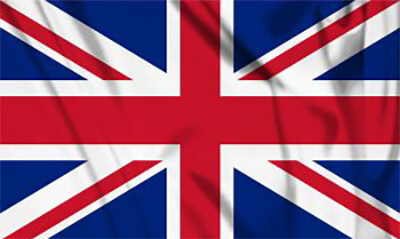 |
| Related Pages |
| 2 Special Air Service Nominal Roll, Operation Galia |
| Podcast |
| December 27th, 1944 – April 24th, 1945 |
| Operation Galia |
| Objectives |
- To prevent German reinforcements moving from the western Gothic Line to Bologna and to slow any German withdrawal through the mountains should the U.S. 5th Army attack.
| Operational Area |
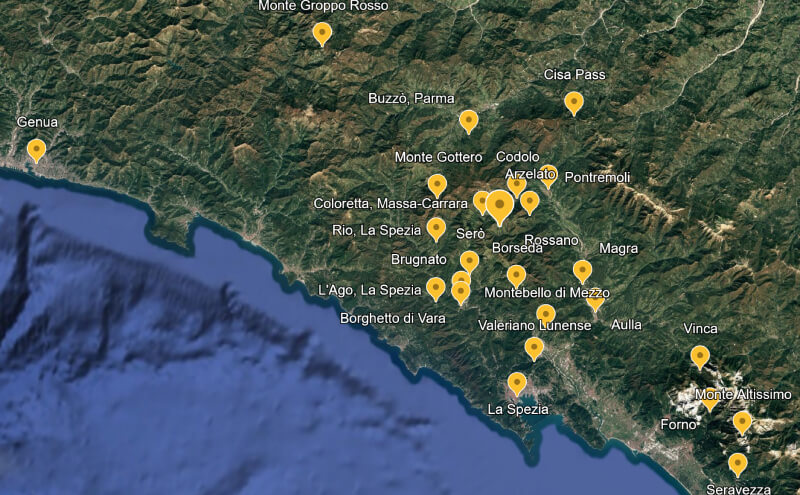
| Allied Forces |
- 2 Special Air Service
- C Squadron
- 33 soldiers of A Troop
- C Squadron
| Axis Forces |
- 29. Panzergrenadier-Division
- 90. Panzergrenadier-Division
- 1. Fallschirmjäger-Division
- 148. Infantrie-Division
- 285. Grenadier-Regiment
| Operation |
| Multimedia |
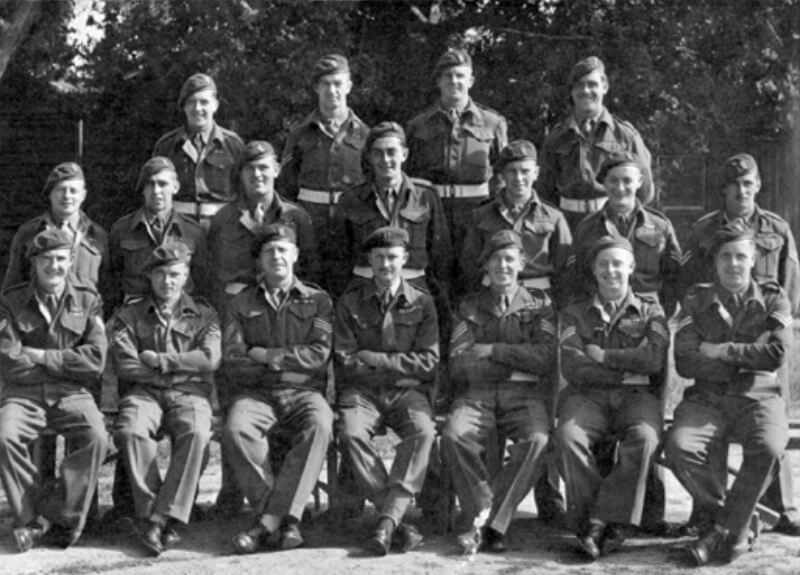
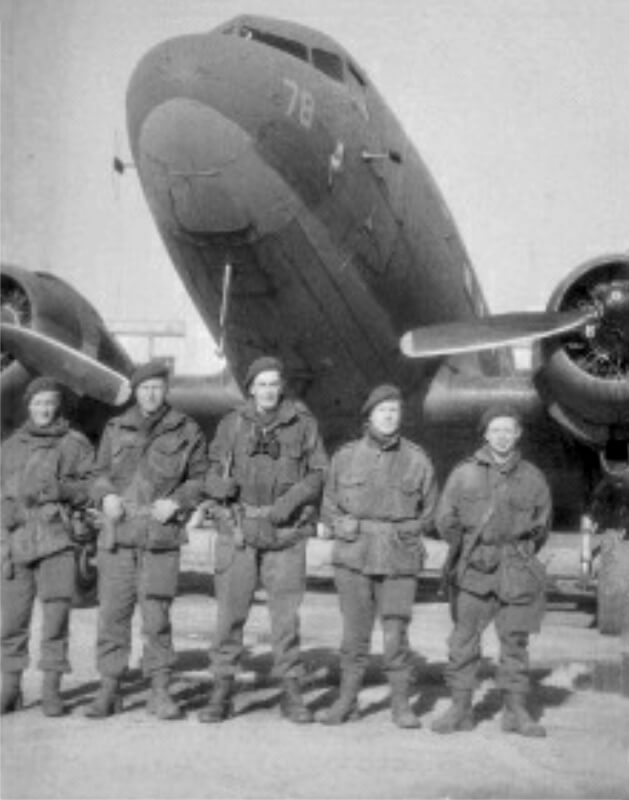
Private Hann, Sergeant Wright, Private Kennedy and Private Everett and Corporal Johnson.
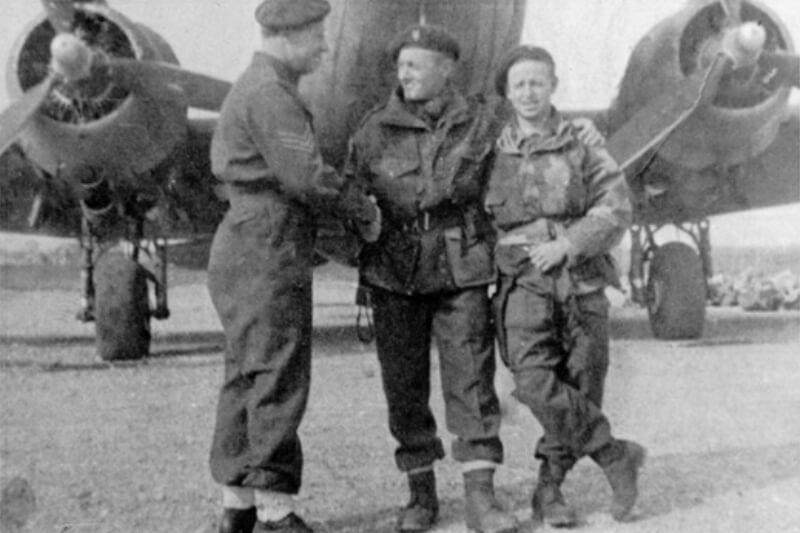
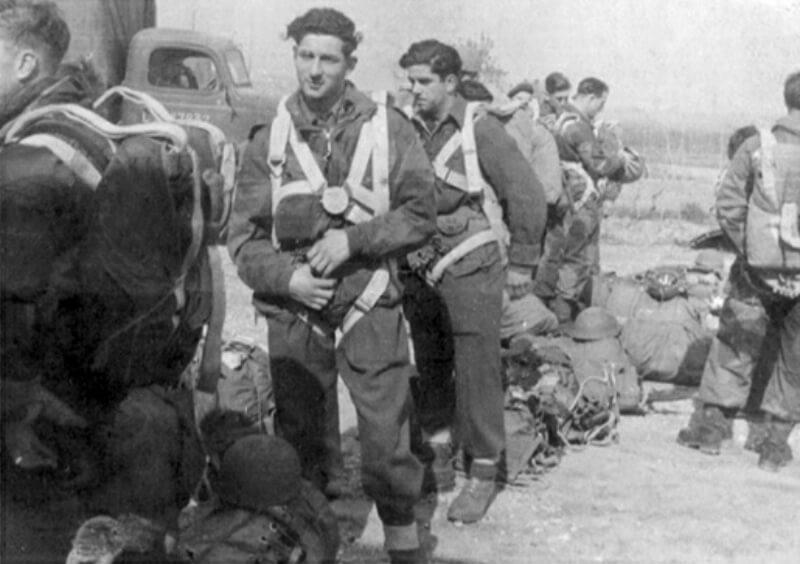
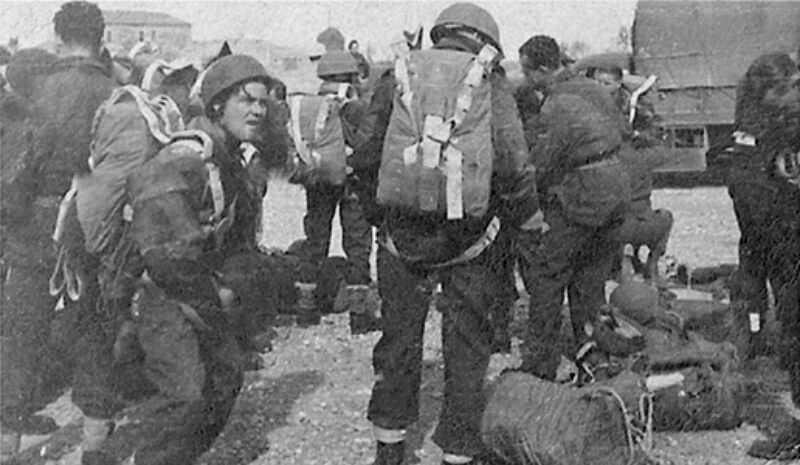
| September 3rd, 1943 |
The Armistice of Cassibile is signed, bringing an end to hostilities between Italy and the Allied powers. Although the agreement is concluded on this day, it remains a closely guarded secret.
The signing takes place at an Allied military encampment near the village of Cassibile, in south-eastern Sicily, recently secured during the Allied invasion of the island. Major-General Walter Bedell Smith, Chief of Staff to General Eisenhower, signs on behalf of the Allies. Brigadier-General Giuseppe Castellano represents the Italian government.
The armistice receives formal approval from King Victor Emmanuel III and Marshal Pietro Badoglio, who serves as Prime Minister following the fall of Benito Mussolini. Despite its significance, the signing is carried out in complete secrecy, with even many senior Italian commanders unaware of the agreement.
| September 8th, 1943 |
The armistice is finally announced to the public. Its disclosure is timed to coincide with the Allied landings at Salerno on the western coast of mainland Italy. The intention is to minimise resistance from Italian forces stationed in defensive positions along the shoreline and to increase the chances of establishing a firm Allied beachhead.
The declaration of the armistice marks Italy’s withdrawal from the Axis alliance and its entry into a new and uncertain phase of the war. German forces, already prepared for this eventuality, act swiftly to disarm Italian troops and take control of strategic positions across the peninsula, triggering a new phase of conflict within Italy itself.
The German response is immediate and well-coordinated. Anticipating the armistice, the German High Command has already reinforced its presence in Italy, recognising that the fall of Sicily, the removal of Mussolini from power, and the installation of a new Italian government signal a shift towards peace negotiations with the Allies. From the German perspective, ceding Italy is not an option. A neutral or Allied-controlled Italy would allow a southern invasion route into German territory. Consequently, they act decisively to deny the Allies a foothold.
After the Italian armistice, many Allied prisoners escape and join the Italian partisans, particularly in the mountainous Apennine regions. Among them is Major Gordon Lett. Major Lett, along with Sergeant Robert James Grierson Blackmore of the 2/15th Australian Infantry Battalion and Rifleman John Micallef of the Second Battalion, Rifle Brigade (Prince Consort’s Own), moves south-east across the hills, anticipating Allied landings that ultimately do not occur.
By the end of September, they reach northern Tuscany and the valley of Rossano in the commune of Zeri, Province of Massa Carrara. Their first contact in the village of Chiesa is with the Deluchi family, marking the beginning of a lasting friendship. As Italian resistance groups gradually organise, the Genoa-based committee sends two Italian Army officers to establish contact with Major Lett. From this meeting emerges the idea of forming an international battalion of partisans.
| September 12th, 1943 |
In the weeks leading up to the surrender, Germany prepares for the worst by significantly increasing its troop deployments across the Italian peninsula. Shortly after Mussolini’s arrest, German intelligence locates him in captivity at a remote mountaintop hotel on the Gran Sasso, the highest ridge of the Abruzzi Apennines. The location is accessible only by cable car. Aerial reconnaissance confirms the site, and German planners determine that a glider assault might succeed. The plan involves landing elite troops, overpowering the Carabinieri, and extracting Mussolini by light aircraft.
This audacious operation, known as Unternehmen Eiche, is planned and executed by Major Harald Mors a Fallschirmjäger officer and Fallschirmjäger landing in DFS 230 gliders. The mission succeeds without a shot being fired. Curiously it is Otto Skorzeny, present more or less as an observer, who takes much of the credit for the operation afterward.
Immediately following the rescue, Hitler reinstates Mussolini as head of a puppet regime in northern Italy, now under German occupation. Mussolini, propped up by his fascist supporters, clings to power in unliberated northern Italy for another eighteen months. He enforces his rule with the assistance of the Brigata Nera, Fascist Blackshirt Militia, working in tandem with the Waffen-SS and the Gestapo to suppress dissent. For the first time, Jews are deported from Italy to Germany, where they fall victim to the Nazi regime’s Final Solution.
German military operations in Italy are overseen by Field Marshal Albert Kesselring, a seasoned commander known for his resilience and tactical acumen. Under his leadership, the German army constructs a series of defensive positions across the country to delay Allied progress. Despite Allied superiority in the air, the German defence proves stubborn and well-organised.
The first major line of resistance, the Gustav Line, stretches from coast to coast south of Rome. Among its fortified strongholds is the mountain abbey of Monte Cassino, a pivotal position in the defensive network. The terrain along the line is rugged, with limited mobility for troops and armour. The winter of 1944–1945 is among the harshest in memory, compounding the difficulty of the campaign.
German forces on the Gustav Line are seasoned and determined. The German and fascist strategy includes ruthless measures to quash resistance. Civilians suspected of aiding Allied prisoners of war or resistance fighters are executed without trial. Entire villages suffer reprisals. One such atrocity occurs in Pietransieri, in the Abruzzo region, where a massacre is carried out. Kesselring later stands trial at Nuremberg, partially for these acts.
Despite the obstacles, Allied forces slowly grind their way forward. The Gustav Line finally breaks in May 1944, after protracted and bloody battles. Monte Cassino falls, and the Germans are forced to retreat northward.
| June 5th, 1944 |
Rome is liberated during the night. However, troop reinforcements, logistical support, and war materials are redirected to the western front after Operation Overlord, the Normandy Invasion, that takes place the very next day. This shift in logistics slows down the progress of the Italian advance.
| July 27th, 1944, |
Major Lett is promoted to British Liaison Officer and head of the Blundell Violet Mission under Special Force. His role involves collecting and evacuating Prisoners off War, gathering intelligence, supporting partisan attacks, and aiding special forces operations. After the Allied advance through central Italy in summer 1944, many Prisoners off War pass through the valley to begin their journey across the lines, coordinated by the Vermouth mission of A Force. This mission continues throughout the year, including evacuating Major Lett’s former companions, Sergeant Blackmore and Rifleman Micallef, both of whom have played vital roles within the partisans.
By the height of summer in 1944, Axis forces retreat to a new line of defence further north, the Gothic Line. This fortification lies just south of La Spezia and the Magra Valley. The position consists of two principal elements: a forward line and an artillery-dominated ridge line further back. These defences control the main north-south corridor along the Ligurian coast and its adjacent plains.
Kesselring again demonstrates strategic foresight by selecting natural terrain features to bolster the line’s strength. As the Allies approach, Nazi and fascist units impose brutal control measures on local populations suspected of sympathy with the Allies. Atrocities occur with chilling regularity. In the village of Vinca, near the Carrara Marble Mountains, a massacre is carried out in reprisal—one of several along the supply route leading to the Gothic Line.
| November 13th, 1944 |
General Alexander, commanding of the 15th Army Group, issues a broadcast over Italia Combatte, urging the Italian Resistance to cease large-scale operations until spring, conserve ammunition, and await further orders. Although intended to reduce unnecessary losses, this directive demoralises the Resistance while encouraging German and Italian Fascist forces to launch offensives against the partisans.
Despite repeated German and Italian Fascist attacks, by December 1944, Major Lett’s group is well established, maintains contact with Allied forces, and enjoys strong local support. He considers the Rossano Valley an ideal location for a Special Forces base due to its single minor access road, surrounding mountains, and proximity to key German supply routes.
By late 1944, the first Allied offensive against the Gothic Line is losing momentum. The Germans have been forced from most of their defensive positions but still hold the western sector near La Spezia. The last American assault towards Bologna ends on October 28th, 1944, though the British Eighth Army continues its attacks along the Adriatic coast. The Americans prepare another offensive towards Bologna before the year’s end.
| December 16th, 1944 |
Germany launches a surprise offensive in the Ardennes region of Belgium. Known as the Battle of the Bulge, the attack nearly succeeds in rupturing the Allied front. The shockwaves of this assault reach Italy, where Allied commanders fear that a similar counter-offensive could strike the Gothic Line, especially as their own forces are depleted and undersupplied. Shortages of ammunition, food, and experienced personnel make sections of the line increasingly vulnerable.
Faced with this crisis, Allied command recognises the need for urgent intervention to prevent a collapse of the front. Plans are hastily devised to relieve pressure on forward positions. For one detachment of the Special Air Service, the festive season is suspended and the squadron is ordered to prepare to deploy behind enemy lines. Their mission: to disrupt Axis operations and alleviate the strain on Allied forces entrenched along the Gothic Line.
Meanwhile, planning for the Special Air Service mission to disrupt enemy communications near the front line begins. The Supreme Headquarters Allied Expeditionary Force offers to deploy C squadron of 2 Special Air Service to Italy for operations behind enemy lines, codenamed Operation Galia.
Agreement is reached to use Gordon Lett’s area as a suitable drop zone for C Squadron of 2 Special Air Service under Captain Walker Brown. Guides will be provided from Major Lett’s International Battalion, along with local civilians leading mules and donkeys for transport, support the mission. Resupply by air remains problematic.
| December 19th, 1944 |
By the time Special Air Service troops arrive in Brindisi, the mission’s objectives are set. Brindisi is a city located in the Apulia region of southern Italy. The Special Air Service will drop into the area north of La Spezia, join the partisans, and disrupt enemy supply lines. Their goals are to prevent German reinforcements moving from the western Gothic Line to Bologna and to slow any German withdrawal through the mountains should the Fifth Army attack. The mission is led by Captain Bob Walker-Brown, a former prisoner-of-war who had escaped to Allied lines and joined the Special Air Service.
The western flank of the Fifth Army is held by the US 92nd Infantry Division, a newly deployed unit with African-American troops and mixed white and black officers. By mid-December, concerns grow that the Germans might exploit the division’s inexperience and threaten the port of Livorno.
| December 22nd, 1944 |
Special Force sends a message to Major Lett: “Reply if ready to receive bodies, repeat bodies, on 24th. Force standing by. Urgent”. Major Lett confirms, marking the drop zone with the letter ‘H’ and British and Italian flags, but requests a three-day delay to secure the valley.
| December 26th, 1944 |
One day before the Special Air Service drop, the Germans launch Operation Wintergewitter, a short-lived offensive against the U.S. division. Despite fierce resistance, the Americans are pushed back, but the German assault ends after two days.
| December 27th, 1944 |
Unexpectedly, a false report of Major Lett’s death circulates, while contact with his mission is lost. In reality, the confusion arises from communication issues and the presence of an Operational Group of Italian-American origin, part of the Office of Strategic Services, who have recently arrived.
Captain Walker Brown, in consultation with Major Macintosh, decides that the mission to Rossano will proceed that day as planned. The operation involves the largest daylight aerial deployment to date, with seven C-47 Dakotas carrying men and supplies, accompanied by fighter escorts. The designated drop zone, codenamed Huntsville, is a meadow above Chiesa. As the planes approach, the partisans secure the area and prepare to signal the aircraft.
During the late afternoon, the noise of a C-47 Dakota is heard approaching the Rossano Valley. The plane circles twice, dropping six parachutes with supplies, along with letters from Major Lett’s fiancée in London and a message from Special Force Headquarters, honouring partisan Nello Sani with the Italian Bronze Medal for distinguished service, the first such award presented to a partisan in the field.
Arounf 17:00 six Dakotas circle overhead. One paratooper drops from the leading plane, and his parachute unfurls as he descends to the centre of the field. Tangled in the cords upon landing, he is met by Gordon Lett. The officer introduces himself as Captain Christopher Leng of Special Force. After shaking hands, Leng signals the waiting men to jump, as they are poised to join them.
With Captain Leng, two Special Air Service men have jumped with him: Ted Robinson, a young radio operator, and Lieutenant James Arthur Riccomini, making his first parachute drop. After firing a green Very light signal, more parachutists appear, their coloured canopies filling the sky. The first among them is Bob Walker Brown, who executes a flawless landing. The location proves a little unsuitable for parachuting personnel, resulting in minor injuries to Private Hildage, Private Mulvey, and Private Shanely on landing.
Lett is visibly relieved to see familiar British faces. The interaction between the two men is practical and unemotional, consistent with military protocol. Once all thirty-three men are on the ground, they assemble around the flags, exchanging helmets for Special Air Service berets. The airdrop continues for another half-hour as partisans move the supplies to a central storage area. Over 300 parachutes are successfully deployed. The Dakotas circle one last time, dipping their wings in a salute before heading back south. Despite the planned coordination, approximately 25% of the Special Air Service equipment, food, and supplies are reported stolen by partisan forces.
Once assembled, Major Lett addresses the troops, assuring them that there will be no immediate danger for at least forty-eight hours, though preparedness remains essential. He informs them that local civilians will provide food and shelter, noting that the valley’s residents are all allies. He points to a hut among the trees where an elderly woman from the Deluchi family has prepared hot tea, though sugar is unavailable.
The men are housed with families throughout the valley and gather later in the village of Valle for a communal dinner. Walker Brown has complete confidence in Lett’s leadership, praising his ability to establish trust among the partisans, despite some resistance from the Communist Garibaldi Brigades. He recognises that Lett’s strategic groundwork is invaluable, noting that the most effective course of action is to disrupt enemy communications swiftly to maximise impact and encourage broader partisan cooperation.
Lett’s briefing highlights the challenges: the enemy is stationed in deep valleys, several hours’ march away, with the mountain passes thick with snow and ice. Motor transport is unfeasible, and while some partisan groups are supportive, others are less reliable. He also warns that the news of the Special Air Service arrival will likely reach the enemy through informers, possibly exaggerated.
The mission’s first objective is to target the communication lines of the German 148. Infantrie-Division, aiming to force a redeployment of troops from the front line. Priority targets include the Via Aurelia, the primary coastal route connecting Genoa, La Spezia, and Sarzana, and the inland routes from Aulla towards Reggio and Modena.
The troop of thirty-three men divides into six detachments: the Troop Headquarters, led by Walker Brown, with seven men, and five additional groups, including four of five men each and one of six. They carry Bren guns, Winchester carbines, sidearms, and a 3-inch mortar, which proves highly effective. Two Vickers medium machine guns will be delivered later.
| December 28th, 1944 |
Lieutenant Gibbon and his group move to the area of the Pontremoli to Aulla road, while Lieutenant Shaughnessy and his group proceed towards the area between Aulla and Reggio. Sergeant Rookes and his party are dispatched to the Pontremoli to Cisa road.
Captain Robert Walker Brown and the remaining members of the troop stay in Rossano, focusing on concealing the stores and establishing communication with Major Gordon Lett and the partisans. Due to the mountainous terrain, it proves impossible to establish wireless transmission communication.
| December 29th, 1944 |
Captain Robert Walker Brown, accompanied by Troop Headquarters, Lieutenant James Arthur Riccomini’s group, and Sergeant Wright’s group, move to Pieve. They are equipped with a 3-inch mortar and 35 high-explosive (HE) bombs.
Despite their efforts, wireless transmission communication remains unachievable due to the challenging terrain. However, they successfully establish contact with the partisan Giustizia e Libertà Brigade.
| December 30th, 1944 |
A six-man patrol is captured by Italian Fascists at Montebello di Mezzo. Their Italian guide is executed, but the Special Air Service men survive the war as prisoners. That same day, a supply aircraft crashes, killing seven Allied airmen.
Captain Robert Walker Brown’s unit sets up an ambush on the road from La Spezia to Genoa. During the attack, three German vehicles are destroyed, and a fourth is set alight.
The enemy responds with heavy fire from an armoured vehicle equipped with a 20-millimetre machine gun. In the ensuing skirmish, three enemy soldiers are killed instantly, while a fourth succumbs to injuries later at Borgeto hospital. The number of wounded remains unconfirmed.
| December 31st, 1944 |
Captain Robert Walker Brown’s unit withdraws to Serò following the ambush on the road from La Spezia to Genoa. The relocation is carried out to maintain operational security and regroup after the previous day’s engagement.
| January 1st, 1944 |
Captain Robert Walker Brown’s unit launches an attack on German and Fascist positions in Borgeto di Varo. The objectives of the attack are threefold:
- To disrupt enemy movement along the La Spezia to Genoa road.
- To quickly make the presence of the Special Air Service known to the enemy.
- To create unease among the garrison troops stationed along the Genoa to La Spezia road, prompting reinforcement.
The assault is carried out using a 3-inch mortar from a range of 1,100 yards, firing 34 high-explosive bombs. Several houses occupied by enemy troops are directly hit.
During the attack, two German lorries approach Borgeto but halt upon hearing the mortar fire. Bren gunners from the SAS move forward several hundred yards and successfully destroy both vehicles.
During this engagement, a group of fourteen partisans from the Giustizia e Libertà Brigade is placed under Special Air Service command. They take up positions south of Borgeto, aiming to intercept any enemy retreat through the mountains, but are unsuccessful in preventing the withdrawal. The number of enemy casualties remains unknown.
The entire enemy garrison evacuates Borgeto and does not return for 24 hours. One vehicle is destroyed by a mortar round.
| January 2nd, 1945 |
Captain Robert Walker Brown’s unit returns to Rossano to replenish supplies. Wireless transmission intercommunication remains unestablished due to the mountainous terrain.
Lieutenant Gibbon also returns to Rossano to receive further orders after observing no enemy movement along the Aulla to Pontremoli road. Following this, he is instructed to rejoin Sergeant Rookes.
| January 3rd, 1945 |
Lieutenant James Arthur Riccomini moves towards the Valeriano area. At last, intercommunication is established, and a resupply request is transmitted.
However, troubling news arrives: Lieutenant Shaughnessy and his entire group are reported captured in Montebello, by a detachment of Brigata Nera. The enemy troops are reportedly disguised in civilian attire. During the capture, the Italian guide is interrogated, tortured, and subsequently shot while attempting to escape.
Meanwhile, Troop Headquarters remains at Rossano, awaiting resupply, but severe weather hampers aerial operations. A message from base indicates that aircraft are unable to reach the Huntsville drop zone. In response, the Special Air Service unit relays that Huntsville is the only feasible drop zone in the operational area for two key reasons:
- It is centrally located, facilitating resupply to dispersed detachments.
- Any enemy approach towards the Special Air Service position would be observed by partisan forces, whose warning system the Special Air Service relies upon.
| January 4th, 1945 |
Lieutenant James Arthur Riccomini places mines on the bridge spanning the river, near Valeriano. During the late evening, one of the mines detonates, destroying a German truck. Subsequent intelligence indicates that twelve enemy soldiers are killed and eight wounded as a result of the explosion.
Meanwhile, Sergeant Wright moves towards Serò with the objective of setting up an ambush along the La Spezia to Genoa road. Troop Headquarters remains stationed at Rossano, still awaiting the resupply which continues to be delayed due to adverse weather conditions.
The situation in the mountains becomes increasingly challenging, with extreme cold and heavy snow covering the ground. The tracks are coated with ice and snow, significantly hampering movement and making any progress both laborious and hazardous.
| January 5th, 1945 |
A Wireless transmission signal is received indicating that the Air Force will not be flying to the Huntsville Drop Zone as originally planned. Instead, supplies designated for the Special Air Service will be dropped at an alternative drop zone, codenamed Halifax.
| January 6th, 1945 |
Sergeant Wright’s group carries out an attack on an enemy staff car. The assault results in the death of a high-ranking Fascist official and the wounding of three additional officers. According to partisan reports, the vehicle is believed to be transporting 125 million lire.
Meanwhile, Lieutenant James Arthur Riccomini returns to Rossano with his group, having completed their previous operation.
| January 7th, 1945 |
Troop Headquarters remains at Rossano, still awaiting resupply. An attempt is made to cancel the scheduled supply drop at the Drop Zone Halifax, as moving supplies from that location proves increasingly unfeasible.
However, signals from base reaffirm that aircraft will not deliver to Huntsville and will instead proceed with the drop at Halifax. In response, Major Gordon Lett and Captain Robert Walker Brown send further messages emphasising the impracticality of moving stores from Halifax to Troop Headquarters and the detached groups.
They explain that heavy snowfall now blankets the ground, rendering the mountain tracks impassable. The depth and severity of the snow make it entirely impossible to transport supplies using mules across the mountainous terrain.
| January 8th, 1945 |
Troop Headquarters remains unable to establish wireless transmission intercommunication, as the challenging mountainous terrain and severe weather conditions continue to impede effective communication.
| January 9th, 1945 |
Signals are placed at Drop Zone Huntsville in the remote hope that aircraft might make a supply drop. Meanwhile, Lieutenant James Arthur Riccomini moves to the Halifax drop zone with his group, where he joins Sergeant Wright’s team and organises the reception. At approximately 15:30, an aircraft successfully delivers supplies at Halifax.
Captain Robert Walker Brown, along with Troop Headquarters, immediately sets off towards Halifax, arriving after a five-hour march. Unfortunately, about 40% of the supplies are stolen by the Communist Justice and Liberty Brigade from Pieve. The drop zone is scattered over approximately 10 square kilometres, making it difficult to secure the area and prevent pilfering given the limited manpower available.
| January 10th, 1945 |
The day is spent attempting to reclaim the stolen equipment from the partisans. At 19:00, Captain Walker Brown’s unit moves to Sero with the intention of conducting a night ambush on the Genoa to La Spezia road. However, this proves impractical as the mountain tracks leading to the valley are coated in solid ice, causing the men to slip frequently and generate considerable noise. The unit spends the night at Serò.
| January 11th, 1945 |
Captain Walker Brown leads a reconnaissance party comprising Privates Rose, Shanley, and Sumptor to examine the road bridge over the river at L’Ago. The assessment identifies the bridge as a viable target, estimating the required amount of P.H.E. explosive to be 136 kilograms.
Sergeant Wright, accompanied by Privates Hildage and Hann, returns to the “Halifax” drop zone to prepare for the next reception. Meanwhile, Lieutenant Riccomini and the remaining men proceed to an ambush positio. After the reconnaissance, the team sets up a firing position approximately 275 metres from the German-Fascist headquarters building in Borgeto di Varo.
As they prepare to open fire on two Fascists playing tennis in the road, a column of vehicles is heard approaching. The reconnaissance team, equipped with only one Bren gun, decides not to fire and instead allows the convoy to pass towards the main ambush party, which has five Brens. The convoy stops briefly in Borgeto before continuing. The column consists of a captured British staff car with trailer carrying six German soldiers, including an officer; a 9-tonne lorry with a large trailer loaded with white canvas packages (approximately 60-centimetre cubes) containing 27 German troops and five women; and a third vehicle that turns off into a side street and halts.
When the two leading vehicles leave Borgeto, the main ambush party opens fire, discharging 32 Bren magazines. Both vehicles and their trailers are destroyed, with the 9-tonne lorry and trailer set ablaze using incendiary rounds. A total of 26 enemy personnel are killed in the attack.
| January 12th, 1945 |
Reports are received from civilians that Blackshirt units are burning houses in Brugnato, in retaliation for the ambush carried out on the previous day. Brugnato is a town where the Special Air Service unit had halted en route to the ambush site.
Captain Robert Walker Brown’s group, equipped with a 3-inch mortar and Bren guns, moves to a position on the mountainside within range of Brugnato, the road-over-river bridge between Brugnato and Borgeto, and the town of Borgeto itself. The plan is to attack Borgeto twice to force the enemy into taking action, either by reinforcing garrisons along the coastal road or by launching a large-scale counter-attack on the Special Air Service positions. Additionally, the aim is to extend the duration of the attack to disrupt enemy transport between La Spezia and Genoa.
Just before the first mortar round is fired, a single Thunderbolt dive-bombs Borgeto but drops a dud bomb. The Special Air Service fires three high-explosive rounds onto the road leading out of Brugnato. The enemy troops in Brugnato immediately begin retreating towards the bridge and the river, where they come under mortar fire. An enemy platoon takes up firing positions on the southern side of the bridge, deploying MG 42 machine guns. The Special Air Service directs mortar fire at the platoon, forcing them to retreat into the hills in disarray. Several small enemy groups attempt to ford the river but are engaged, and some are reported to have drowned, likely having been wounded by mortar fragments. The river itself is approximately 60 centimetres deep.
An enemy 20-millimetre machine gun positioned in the Borgeto cemetery is targeted with three rapid mortar rounds, one of which lands directly on the gun, destroying it and killing the crew. Despite continued enemy fire, it remains inaccurate. The Special Air Service mortar is positioned for indirect fire behind a crest, allowing it to remain concealed. Groups of ten rapid mortar rounds are fired intermittently at the town and surrounding enemy positions.
The Special Air Service Bren gunners, supported by an Italian Breda machine gun, advance to a flanking position and fire 57 Bren magazines, including tracer and ball ammunition, at the town, setting one house on fire.
By 16:00, ammunition is nearly exhausted, with only the reserve remaining. As the troop prepares to withdraw, four Thunderbolts appear overhead. Two dive-bomb the bridge between Borgeto and Brugnato, while the other two strafe the road. This display has a significant psychological impact, likely leading the enemy to believe the Special Air Service has air support.
The enemy subsequently brings up a 105-millimetre field gun from La Spezia, shelling the hillside heavily. However, the gunners appear unaware of the Special Air Service mortar’s position, and no rounds hit the SAS location.
No partisan groups actively participate in the attack, except for a few courageous individuals who fire Sten guns towards Borgeto from a distance of 2,750 metres. The Special Air Service party withdraws up the mountain in extended order without incurring any casualties.
| January 13th, 1945 |
The unit returns to Drop Zone Halifax to find that a B-25 aircraft has delivered a Vickers medium machine gun without a parachute, damaging the weapon.
| January 14th, 1945 |
The unit waits throughout the day for a resupply drop, but poor weather conditions prevent any delivery.
| January 15th, 1945 |
A resupply drop on Drop Zone Halifax is successfully completed, delivering two Vickers machine guns. The unit relocates to Rossano. Due to a shortage of mules, Corporal Johnson and two men remain at the drop zone with the remaining equipment and stores, as they cannot be transported that day.
| January 16th, 1945 – January 17th, 1945 |
The unit rests at Rossano and gathers intelligence regarding the area around the Pontremoli to Aulla road.
| January 18th, 1945 |
Captain Walker Brown’s unit, leaving behind the sick Privates Rose, Gargan, and Hildage, moves to Codolo, accompanied by Major Gordon Lett. The initial plan to conduct a Vickers gun attack against the German garrison of 300 troops in Vignola, is abandoned when it becomes apparent that the enemy monitors the route between Codolo and Vignola.
The decision is made to ambush the road south of Pontremoli, followed by an attack on the road north of the town. The unit moves to Arzelato, planning to leave the mules behind and launch the ambush that night. However, the march from Codolo to Arzelato proves exceptionally slow and difficult due to thick cloud cover, icy paths, deep snow, and complete darkness. Realising that they would be unable to execute the ambush and safely withdraw before daylight, the unit decides to rest at Arzelato the following day.
| January 19th, 1945 |
The unit remains indoors throughout the day as Arzelato is under full observation by the enemy garrison at Pontremoli. That evening, a group of twenty partisans from Ricchetta’s band arrives, having received permission from Major Gordon Lett to participate in an Special Air Service attack. This group, led by a respected partisan known as Nino, places itself under Special Air Service command.
At 19:00, under cover of darkness, Captain Robert Walker Brown’s unit, joined by the partisans (excluding Major Lett, Corporal Johnson, and the mules), launches an attack on the Pontremoli to Aulla road. Due to poor visibility, only two Vickers guns are deployed. These are positioned to fire along fixed lines at a section of road where a steep drop of approximately 15 metres on the west and a sharp cutting on the east offer a strategic advantage.
A vehicle with headlights approaches and drives into a column of marching troops, who are hit by the machine gun fire. While exact casualties remain unknown, the following day, German soldiers inform civilians that many bodies are left on the road. The enemy responds with weak and ineffective rifle fire, which nonetheless causes the partisans to disperse quickly.
| January 20th, 1945 |
At 00:30, the Special Air Service and partisan forces withdraw from the ambush position and march to Codolo. The partisans remain at Codolo, while the Special Air Service moves to Noce, to rendezvous with Corporal Johnson and the mules, arriving at 06:00. An Italian messenger from Major Lett informs Captain Walker Brown that Corporal Johnson and the mule train encountered an enemy patrol but managed to withdraw without incident to Arzelato before being redirected to Coloretta.
The Special Air Service unit marches to Coloretta, arriving at 07:00. As dawn breaks, a large German force estimated at battalion strength is observed advancing in extended order at a distance of 230 metres. The alarm is raised, and the Special Air Service successfully withdraws under mortar fire without casualties.
Lieutenant Riccomini, suffering from a septic foot, along with Private Sumptor and an Italian guide, follow behind the main unit at a slower pace. During this time, the partisans in Codolo are surrounded, and six, including Nino, are executed. Privates Everett and Hann, sent to scout the line of march, do not rejoin the unit for several days. Corporal Johnson and the mule team fail to reach Coloretta after being fired upon en route, leading to the desertion of most mule drivers and the loss of vital equipment, including all wireless transmission gear, rations, rucksacks, and sleeping bags.
At dawn, the enemy launches a coordinated assault involving the First Ligurian Division from multiple towns, including Pontremoli, Borgo Val di Taro, Bedonia, Varese, Borgeto, and Calice. Captain Walker Brown’s unit moves to Rio, arriving at 17:00. Half an hour later, the enemy begins shelling Rio with a 75-millimetre gun. The Special Air Service relocates to the base of Monte Gottero for the night.
| January 21st, 1945 |
At dawn, the unit crosses the summit of Monte Gottero (1,640 metres). En route, they encounter Lieutenant Gibbon, Corporal Ford, and several Italians, who join the main group. They continue to Monte Groppo, arriving at 21:00. At 23:00, intelligence indicates that a force of 400 German infantry is approximately one hour away. On hearing this, a contingent of 1,200 partisans from various groups holding Monte Groppo quickly disperses. The Special Air Service party then moves to Boschetto. Partisans report that the German force is one hour behind, with German officers reportedly informing civilians they are hunting British parachutists.
| January 22nd, 1945 |
At 07:00, the Special Air Service departs from Boschetto. Lieutenant Gibbon, Corporal Ford, and the Italian contingent move separately to their base in Belforte. An hour later, approximately 2,000 German troops attack Boschetto and capture the partisan leader, Ricchetta. At 13:00, the Special Air Service unit reaches Buzzo and meets Sergeant Rookes and Corporal Larley. At this point, Captain Walker Brown’s unit has completed 59 hours of continuous marching without rest or rations. After joining forces with Sergeant Rookes’ party, they move to the mountains an hour from Buzzo for a well-needed twelve-hour rest.
| January 23rd, 1945 – January 24th, 1945 |
The Special Air Service remains on high alert as German troops occupy Buzzo. Lieutenant Leng joins the group.
| January 25th, 1945 |
Reports indicate the arrival of 400 Mongol troops in Buzzo. A partisan warns that these troops are advancing, but this proves false. Nevertheless, the Special Air Service unit relocates to the deserted village of Nola.
That night, Captain Walker Brown, Lieutenant Leng, and an Italian guide patrol Buzzo to assess the situation. As they approach within 18 metres of the village, they come under fire from a Schmeisser submachine gun and an MG 42 machine gun, which fires a full belt at close range.
| January 26th, 1945 |
The Special Air Service unit remains at Nola, maintaining a state of stand-to.
| January 27th, 1945 |
Reports indicate that the area is clear of enemy presence. Captain Robert Walker Brown’s unit returns to Rossano, where the entire troop, except for Lieutenant Gibbon and Corporal Ford, gathers. During the German attack, Lieutenant Riccomini and Private Sumptor remain hidden in the mountains near Torano. Meanwhile, Corporal Johnson, Privates Rose, Gargan, Hildage, Hann, Everett, and Major Gordon Lett make contact and become surrounded in Sero by German troops from the 285. Grenadier-Regiment, arriving from Genoa. The group successfully fights its way out, losing one Italian and one Russian attached to their party, while one Italian is wounded.
| January 28th, 1945 |
Lieutenant Leng, the British Liaison Officer, leaves the Special Air Service unit. The troops dig up buried rations and ammunition and take a rest. A team is dispatched to Arzelato to retrieve the buried B set, previously hidden by Corporal Johnson on January 20th, 1945. Wireless communication remains unestablished.
| January 29th, 1945 |
The Special Air Service unit remains at rest, with no wireless transmission communication available.
Meanwhile Squadron commander Roy Farran at C Squadron’s Headquarters authorises Operation Brake 2, sending reinforcements overland through German lines.
| January 30th, 1945 |
A message requesting resupply is sent blindly, successfully received at the base. The supply drop is requested at Drop Zone Huntsville as a German patrol is billeted at Drop Zone Halifax and another patrol is 40 minutes’ march from Drop Zone Brighton. The Rossano area remains the only relatively secure base. Signals are set up at Drop Zone Huntsville.
| January 31st, 1945 |
Signals are placed at Drop Zone Brighton and Drop Zone Huntsville until the weather becomes unfavourable.
| February 1st, 1945 |
A runner from Lieutenant Gibbon arrives and is ordered to return with written instructions for Gibbon to regroup at Borseda, as soon as possible.
| February 2nd, 1945 |
Weather conditions are extremely poor, with low clouds and mist. At approximately 08:30, a single Dakota aircraft flies over “Huntsville”. Emergency signals are quickly displayed at Rossano, and a team moves at speed to “Huntsville” to set up signals. The aircraft circles for 90 minutes before sighting the signals, flying repeatedly within a ring of mountains obscured by low clouds. Despite challenging conditions, the pilot successfully identifies the drop zone and executes multiple precise passes. Two hours later, the same aircraft returns and repeats the operation. Captain Milne of the Royal Army Medical Corps parachutes from the aircraft at an altitude of approximately 110 metres. His parachute takes slightly longer than usual to deploy, but he lands gently on the snow.
| February 3rd, 1945 |
Captain Milne examines Private Rose, who is unwell and unable to move. Milne advises that Rose should make his way through the lines independently once he is fit to travel.
| February 4th, 1945 |
The Special Air Service unit prepares to move to Borseda.
| February 5th, 1945 |
No. 1 Troop, minus Lieutenant Gibbon and Corporal Ford, moves to Borseda, leaving Major Lett and Lieutenant Leng at Rossano. Sergeant Rookes and his group are tasked with attacking the Aulla to La Spezia road with Vickers machine guns that very same night. However, due to the absence of moonlight or cloud cover, they find it impossible to proceed and postpone the attack until the following day.
| February 6th, 1945 |
The Special Air Service unit conducts a reconnaissance to prepare for a potential mortar attack on Padivarma, as well as scouting for a suitable ambush position.
| February 7th, 1945 |
The Special Air Service Unit makes contact with a partisan leader named Bucchione, commanding a band of approximately 150 partisans. The group has high morale and a proven record of successful raids, including attacks on La Spezia. Bucchione assures that his men are committed to fighting.
| February 8th, 1945 |
During the night, Sergeant Rookes party, equipped with one Vickers gun and three Bren guns, ambushes a German convoy, destroying eight vehicles and causing significant casualties among the German troops and mules bivouacking by the roadside.
Simultaneously, Captain Robert Walker Brown’s unit attacks the Genoa to La Spezia road, destroying two trucks and damaging a third. The extent of enemy casualties is not determined. In retaliation, the enemy burns two houses at Statano and one house at Manzile. An Italian scout from Bucchione’s group, sent to assess Sergeant Rookes’ attack, reports that civilians from Isola indicate numerous enemy fatalities and injuries.
Later that day, Captain Walker Brown meets with Bucchione, who advises against the mortar attack on Padivarma. He explains that since the Borgeto raid, German troops have begun cohabiting with civilians to avoid being targeted, making such an attack likely to harm civilians and damage Allied relations.
Lieutenant Gibbon and Corporal Ford rejoin the main unit.
| February 9th, 1945 |
Signals are set up at the Borseda Drop Zone, but poor weather prevents any air drops.
| February 10th, 1945 |
A B-25 aircraft delivers operational funds and supplies at Drop Zone Halifax, a group of the Giustizia e Libertà Communist partisans fires towards the drop zone. Following the drop, the same group attempts to loot Special Air Service supplies, including food and cigarettes.
In response, Captain Robert Walker Brown instructs Private Gargan to fire two pistol rounds into the air as a warning. The partisans retreat approximately 180 metres before opening fire on the Special Air Service using Sten guns and rifles. The Special Air Service responds by firing two Bren gun magazines over their heads at a low trajectory, followed by a third magazine directly into their midst as they continue to flee.
No casualties are reported among the partisans. Due to this incident, the Special Air Service subsequently refrains from operating alongside the partisans, deeming them completely unreliable.
Captain Walker-Brown receives orders allowing withdrawal. Recognising his men’s exhaustion, he decides to leave while conditions permit. The unit begins a gradual withdrawal towards Allied lines, conducting minor attacks en route. Heavy weapons are left behind for future partisan use.
The troop splits into two groups: the first, led by Captain Walker Brown, includes Troop Headquarters, Lieutenant Gibbon’s team, Sergeant Rookes’ team, one Italian, one German Fallschirmjäger who has switched sides, and four Polish fighters. The second group, led by Lieutenant Riccomini, includes his team, Sergeant Wright’s team, one French fighter, and two Poles. Captain Walker Brown’s group sets out at 15:30, with Lieutenant Riccomini’s group instructed to follow after 24 hours.
| February 11th, 1945 |
The Brake 2 unit arrives in Rossano, just as as the men of Operation Galia are preparing to withdraw. Major Lett and his partisans remain behind, as does Brake 2, preparing for the next operation.
Captain Walker Brown’s group crosses the Magra River and the Aulla to La Spezia road around midnight. Although local intelligence reports suggest regular German patrols at that hour, none are sighted. Due to the heavy traffic and potential interference with Prisoner of War escape routes, they decide not to attack. Instead, the group withdraws, factoring in their exhaustion, lack of mule transport across the river, and limited rations (one tin of bully per man for two days).
| February 12th, 1945 |
The retreating group of Captain Walker-Brown reaches Vicchette and secures local guides.
| February 13th, 1945 |
Captain Walker-Brown’s Special Air Service group undertakes a long and arduous march to Vinca, traversing rough terrain. Due to physical fatigue, the men are unable to carry heavy weapons, leaving the Bren guns with partisans before ascending Monte Altissimo.
| February 14th, 1945 |
The Special Air Service group of Captain Walker-Brown sets out from Forno after depositing rucksacks. Carrying only carbines and reserve .300 ammunition, they continue at 15:00. A group of downed American pilots joins them. Although guides initially hesitate to proceed due to recent enemy mining and mortar attacks on the western side of Monte Altissimo, they eventually agree to lead the group. Moving as a combat patrol, they resolve to reach Allied lines at any cost.
The march over Monte Altissimo is exceptionally strenuous, involving a climb of approximately 610 metres at a steep gradient. The pass is reached around 23:00. During the climb, the unit encounters an enemy patrol of four men approaching within 90 metres. The Special Air Service advance guard takes up firing positions, but the enemy spots them and retreats into a gully.
| February 15th, 1945 |
At 03:00, one of the Special Air Service Group of accidentally triggers a trip wire, igniting a white phosphorus flare. Although the unit expects enemy defensive fire, none occurs. By 04:00, the group of Captain Walker-Brown successfully reaches the forward American platoon.
| February 20th, 1945 |
The second Special Air Service party of Operation Galia reaches the Allied Lines.
| Aftermath |
Captain Walker-Brown is awarded the Distinguished Service Order for his leadership. The Special Air Service suffers six men captured and one left behind due to illness but otherwise completes the mission intact. Their operations inflict significant damage and divert thousands of enemy troops. Plans for a follow-up mission, Operation Blimey, begin but come too late to impact the war. By April, the Allies break into the Po Valley, forcing the Germans into full retreat. Operation Galia officially ends on April 24th, 1945, with its objectives successfully achieved.
| Operation Galia |
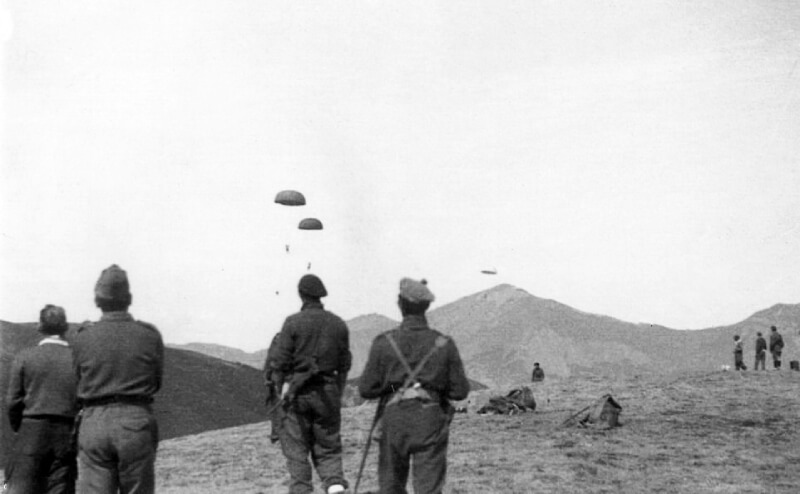
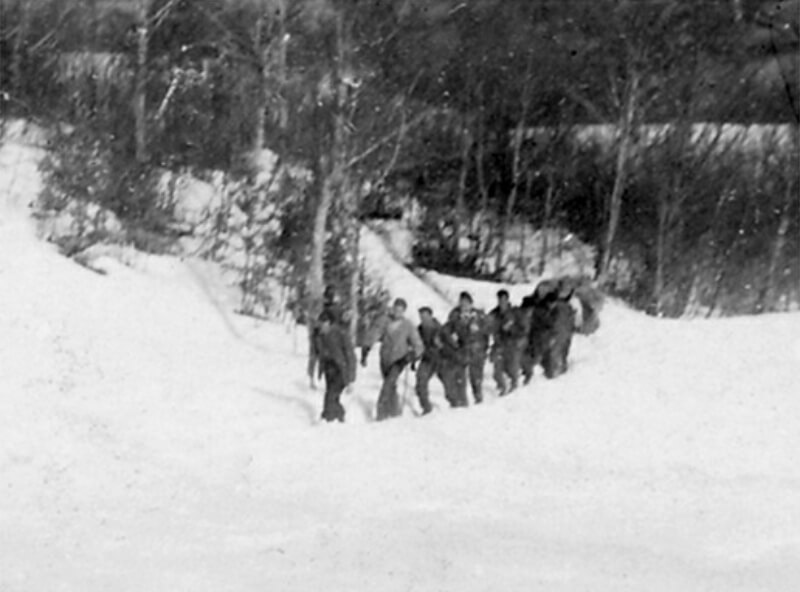
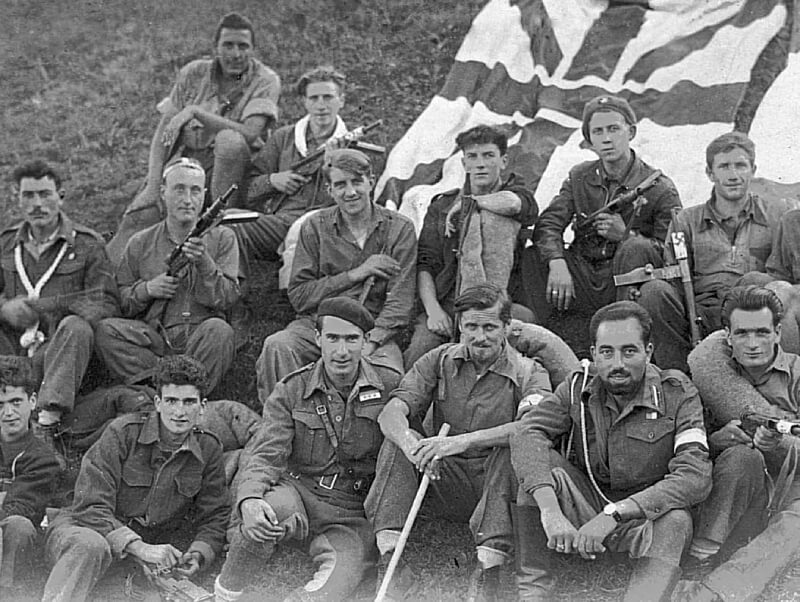
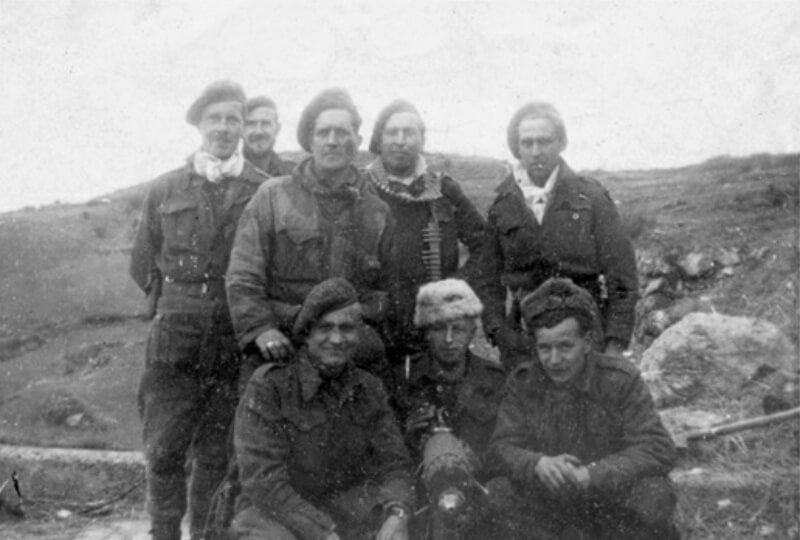

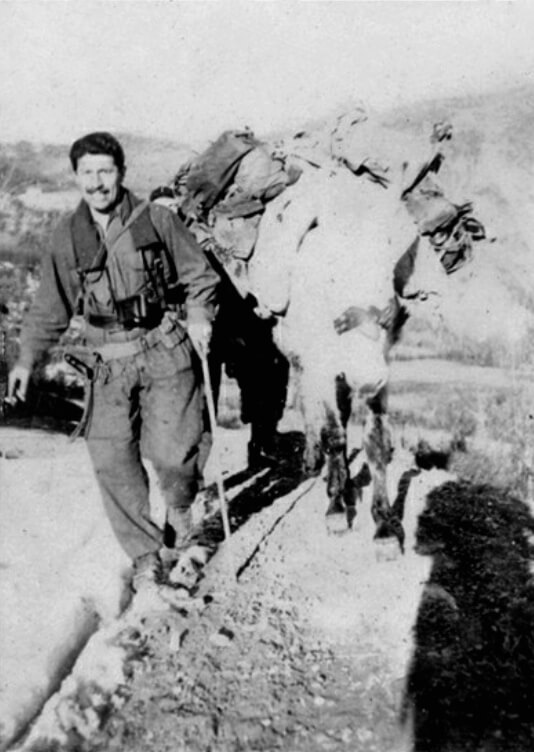

Someone essentially help to make severely posts I’d state. This is the first time I frequented your website page and up to now? I amazed with the analysis you made to create this particular submit extraordinary. Wonderful task!
We try to educate ourselves and the people who read our articles. Thank you so much.